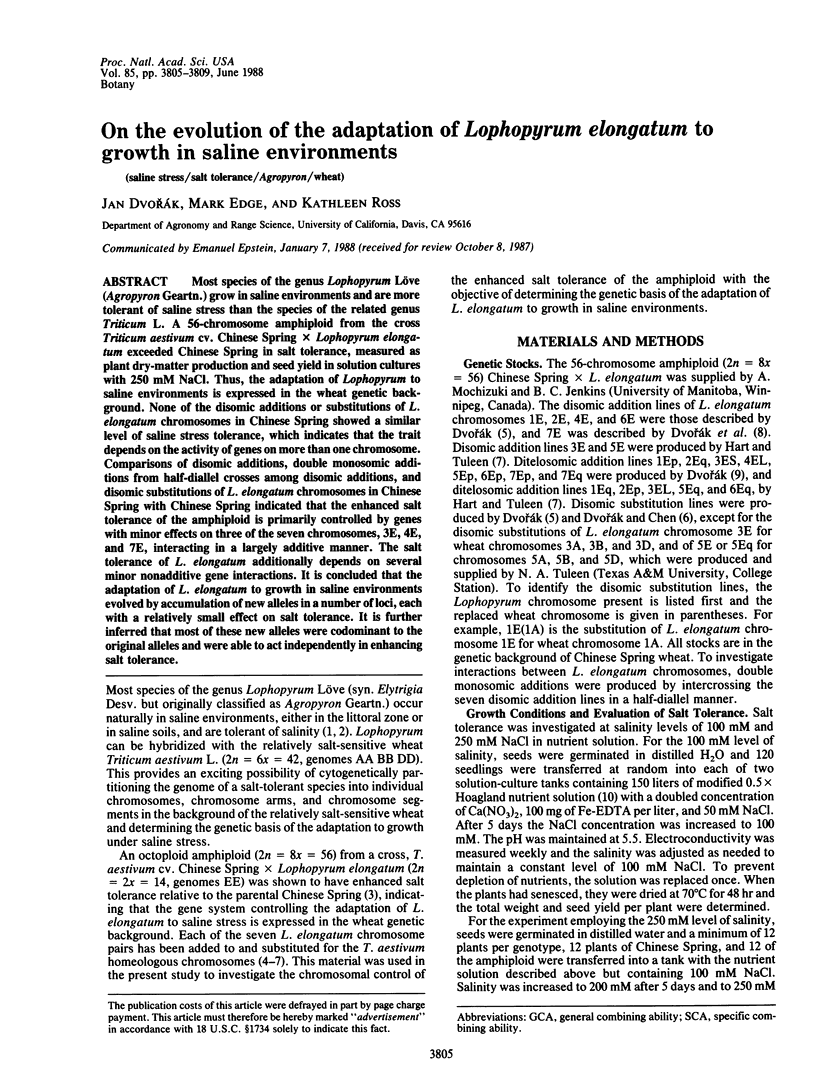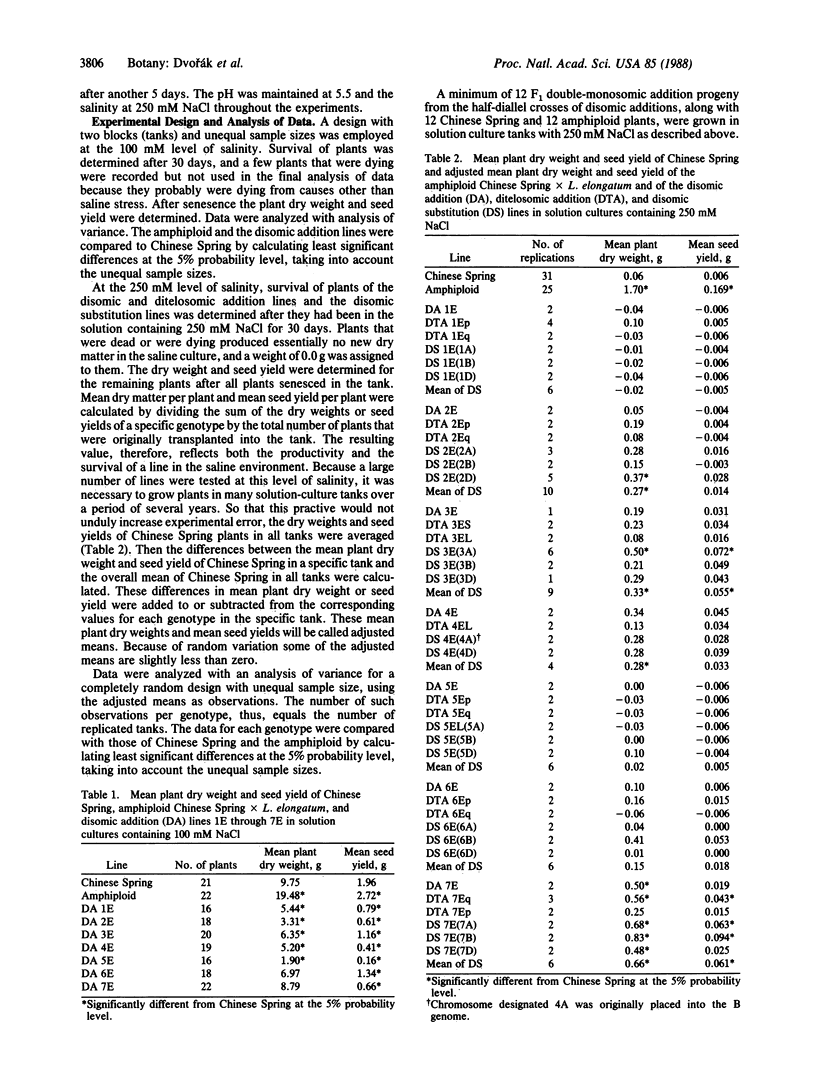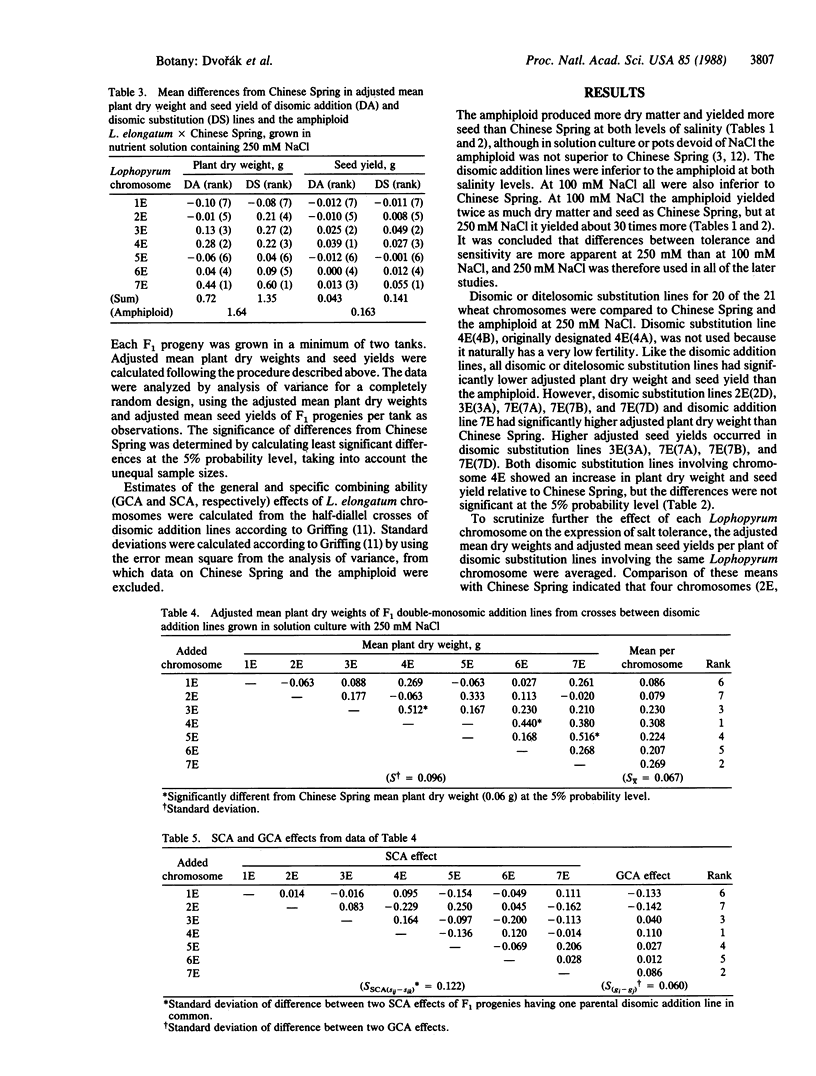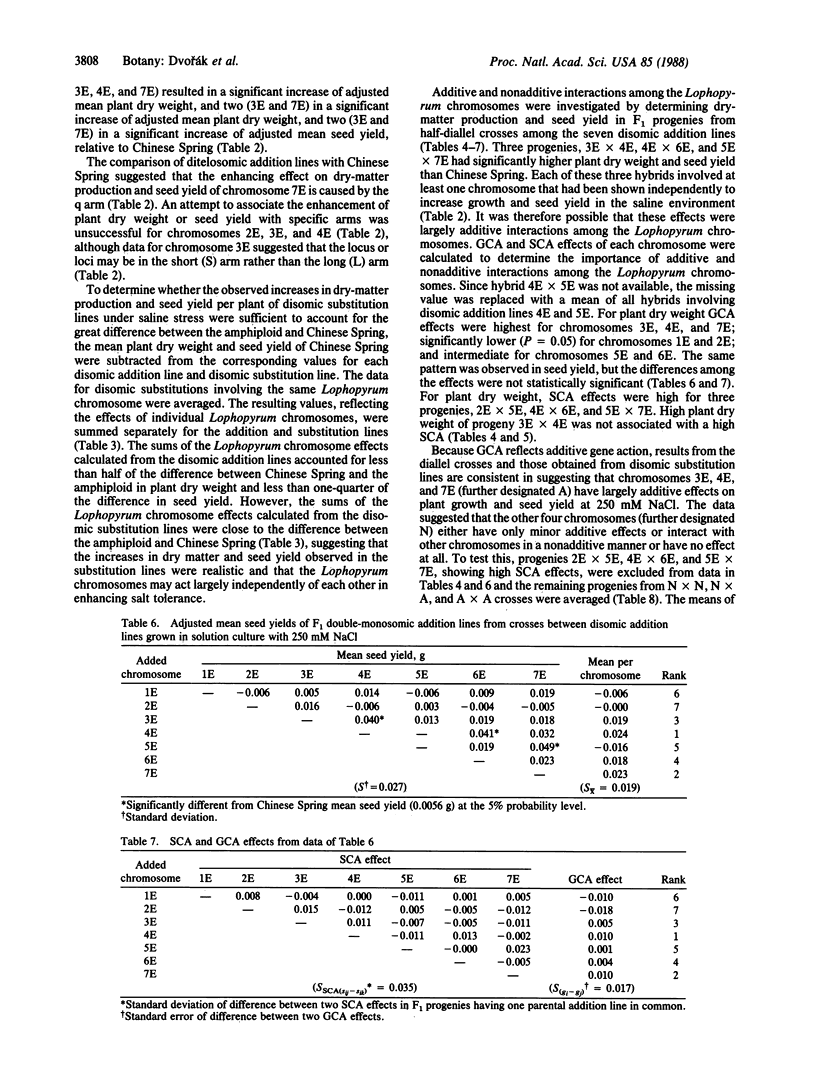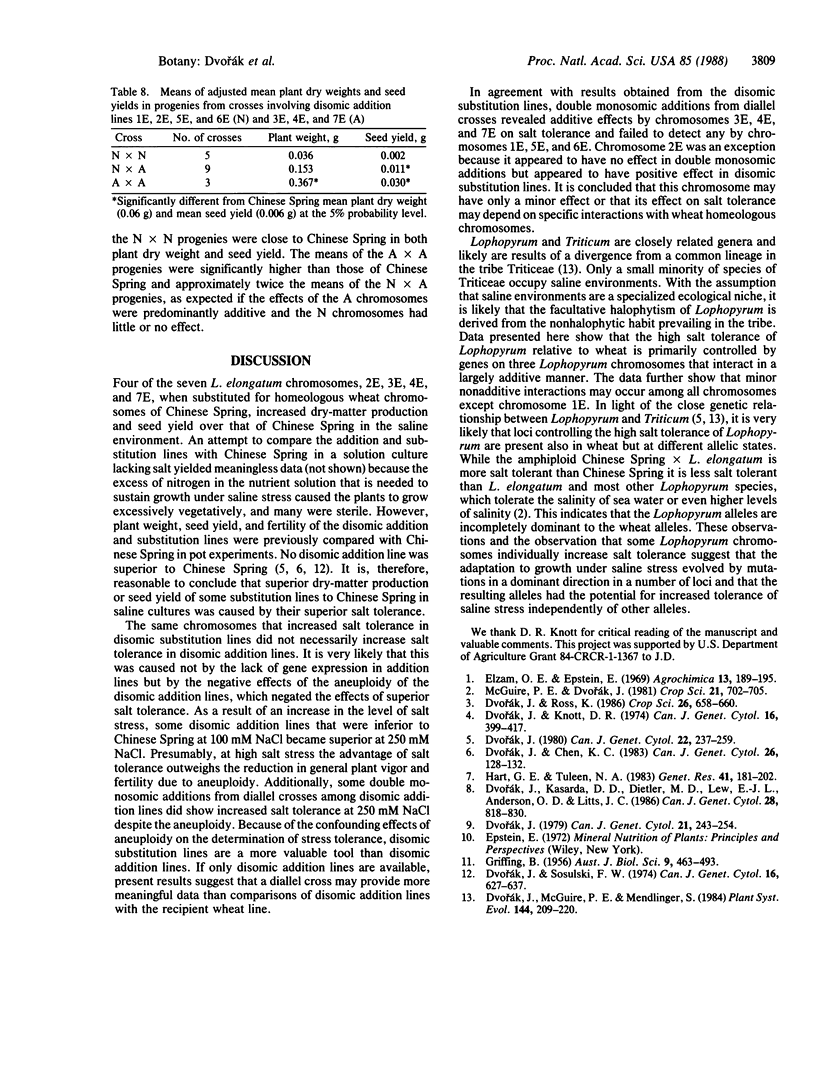Abstract
Most species of the genus Lophopyrum Löve (Agropyron Geartn.) grow in saline environments and are more tolerant of saline stress than the species of the related genus Triticum L. A 56-chromosome amphiploid from the cross Triticum aestivum cv. Chinese Spring × Lophopyrum elongatum exceeded Chinese Spring in salt tolerance, measured as plant dry-matter production and seed yield in solution cultures with 250 mM NaCl. Thus, the adaptation of Lophopyrum to saline environments is expressed in the wheat genetic background. None of the disomic additions or substitutions of L. elongatum chromosomes in Chinese Spring showed a similar level of saline stress tolerance, which indicates that the trait depends on the activity of genes on more than one chromosome. Comparisons of disomic additions, double monosomic additions from half-diallel crosses among disomic additions, and disomic substitutions of L. elongatum chromosomes in Chinese Spring with Chinese Spring indicated that the enhanced salt tolerance of the amphiploid is primarily controlled by genes with minor effects on three of the seven chromosomes, 3E, 4E, and 7E, interacting in a largely additive manner. The salt tolerance of L. elongatum additionally depends on several minor nonadditive gene interactions. It is concluded that the adaptation of L. elongatum to growth in saline environments evolved by accumulation of new alleles in a number of loci, each with a relatively small effect on salt tolerance. It is further inferred that most of these new alleles were codominant to the original alleles and were able to act independently in enhancing salt tolerance.
Keywords: saline stress, salt tolerance, Agropyron, wheat
Full text
PDF